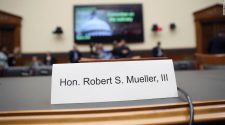On Oct. 25, five Native Hawaiian grandmothers felt they had no choice when they placed themselves before a bulldozer digging a waterline trench. They were there to protect the buried bones of their ancestors. The area was a well-known burial site.
The landowner called the police to arrest the women and continued to dig. Shortly afterwards, human remains were unearthed, crushed and destroyed.
“To have anybody bulldoze through a known cemetery is a civil rights issue, it’s a human rights issue, and we cannot have that anymore,” declared Noelani Ahia during a recent council committee meeting.
To prevent this from happening again, I have introduced a bill to repeal the exemption for grading and grubbing permits when trenching for underground utilities. On March 5, the council referred the bill to the Agriculture and Public Trust Committee, which I chair.
The council created the county archaeologist position in 2019. Janet Six was hired in 2020, with the intent of reviewing projects just like this, where digging occurs in areas with previously recorded burials and other cultural assets.
If the bill is enacted as an ordinance, part of Six’s role will be to assess projects requiring utility trenching and identify problem areas that need additional evaluation before digging begins.
We have spoken with Hawaiian Electric and others, and everyone agrees with the need to review an area to avoid burials. However, the process needs to be quick and efficient.
The review process will be simple and consist of looking at a cultural overlay map currently being developed by Six.
At my committee’s March 16 meeting, she shared that the State Historic Preservation Division, private archaeologists and even the County of Maui have large data sets that are being incorporated into a map including: known burials, burial preserves, archaeological sites, previous archaeological survey areas, historic buildings and light detection and ranging (LiDAR) imaging. Sensitive information will not be public.
The county’s LiDAR mapping data is exceptionally useful. The technology shows land through tree canopies, revealing not only buildings, but also geologic and human structures and land contours. Project assessments can be done with much more accuracy than a human survey. Entire areas can be surveyed in a fraction of the time with a much more accurate review and less cost. With Six’s expertise, the county can now use existing data when reviewing projects for cultural-resource impacts.
In addition to the benefits LiDAR mapping data provides for culturally related projects, equally exciting is that this data can be utilized for a variety of projects, including roadway improvements, real-time support to the Fire Department when cutting fire roads, pre- and post-disaster assessment, flooding and sea level rise analyses, dune monitoring and many other uses that reduce staff time in the field and increase mapping accuracy.
As we work our way through the year, I intend for my committee to continue its efforts to protect, preserve and perpetuate our cultural history for the benefit of generations to come. If we want to keep our cultural heritage, we cannot erase our past. Simple steps like hiring a county archaeologist, developing a cultural overlay map and removing unneeded detrimental exemptions can go a long way to ensure we look to the past to bring us our best future.
* Shane M. Sinenci is chair of the council’s Agricultural and Public Trust Committee. He holds the council seat for the East Maui residency area. “Council’s 3 Minutes” is a column to explain the latest news on county legislative matters. Go to mauicounty.us for more information.

















